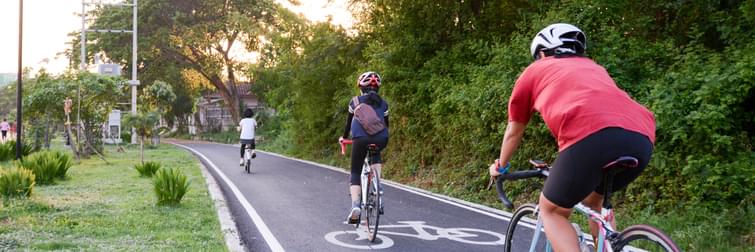
blog: Sustainable Access: A Smarter Way to Measure Transport Sustainability
Thursday 15th May 2025
Every local transport authority is looking to improve the sustainability of their transport systems, as reflected by virtually every Local Transport Plan in the country. And that is great – sustainable transport is cheaper, cleaner, and healthier. However, whilst every local authority wants it, very few are clear about how they intend to measure it, and if you can't measure it, how do you know that you're on track to achieve it?
Setting SMART objectives for sustainable transportation is important for two reasons:
- It allows residents to hold their elected officials accountable
- It allows local authorities to assess transport and planning interventions in relation to their objectives
The Current State of Measurable Targets
I asked ChatGPT to look for 10 random local transport plans and analyse what measurable targets exist for sustainable transportation. Out of the 10, only two had measurable objectives: Greater Manchester and London, with targets of 50% and 80% modal split for sustainable transportation respectively. The rest of the LTPs had no quantitative targets for sustainable transportation.
Modal split is a measure that looks at the share of different transport modes for all trips in a city. Greater Manchester and London should be applauded for their ambitious modal split targets.
The Limitations of Modal Split
However, measuring modal split is a resource-intensive exercise. The only robust way to do it is to undertake a travel survey, whereby a large sample of households fill up travel diaries where they record every trip. This exercise can produce invaluable data, but not every Local Transport Authority will have the resources to undertake it in regular enough intervals for it to be meaningful.
Another issue with using modal split as a target is its applicability to decision making. While any investment in walking, cycling and public transport is likely to increase the share of these modes, the scale of improvement at a city level is difficult to pinpoint.
Introducing "Sustainable Access"
Nevertheless, there is a simpler alternative for the mode share target that is easier to measure and more useful for decision making. I call it "Sustainable Access".
Instead of measuring how people are travelling, you can measure how people can travel. This is likely to be highly correlated with how people are travelling. For instance, most people are willing to walk up to 10 minutes (about 1 mile). More destinations within walking distance mean that people are more likely to walk.
This information can be used to create a measurable Sustainable Access objective. For example, the % of people who can reach at least a GP, schools, a corner shop, and bus stops within a 10-minute walk. Measuring it requires some technical tools, but it is far easier and cheaper than performing a travel survey.
Cycling and public transport can take people further, and thus the number and variety of destinations should increase to include employment, hospitals, and town centres etc. In addition, the radius can increase to 15–30 minutes.
This measure is somewhat similar to the “15-minutes cities” concept, but it allows flexibility in choosing the time threshold for the right places. Rural places, for example, where public transport viability is more challenging, could set lower thresholds. That is, accepting a lower percentage of people who can access destinations by sustainable transportation.
In addition, the DfT is now experimenting
with new ‘connectivity’ statistics which might make it even easier to measure “Sustainable Access”.
Practical Decision-Making Benefits
Sustainable Access targets are not only straightforward to measure, they are also highly effective for decision making. Any transport or planning decision can be analysed for its precise impact on Sustainable Access. That way, policies, investments and interventions could be ranked and prioritised based on their contribution to Sustainable Access.
One of the most effective interventions to increase Sustainable Access is to increase bus frequency. Doubling frequency from, say 2 buses per hour to 4 buses per hour reduces wait times from 15 minutes to 7.5 minutes, and brings in many more people into the 30 minutes threshold (how many exactly depends on the average density and streets layout, which in themselves could be used to improve Sustainable Access).
Integrated Transport Planning
Another benefit of Sustainable Access is that it allows the Local Transport Authority to take a holistic view of their transport system and integrate transport and planning decisions. Just as much as more frequent buses can get people faster to their destinations, urban extension (or regeneration) can bring destinations closer to where people already live. Whilst this is not normally considered by traditional transport appraisal techniques, it can, and should, be considered when using the Sustainable Access metric. The point of transport it to get people to places, getting places to people bring the same outcome.
Our Experience at ITP
At ITP, we regularly use Sustainable Access targets to inform policy decisions, from redesigning bus network to planning bike lanes, and urban realm improvements. Measuring Sustainable Access and setting targets is one of the most cost-effective ways to improve any transport strategy. If you'd like to find out more, please contact me here, or get in touch.
